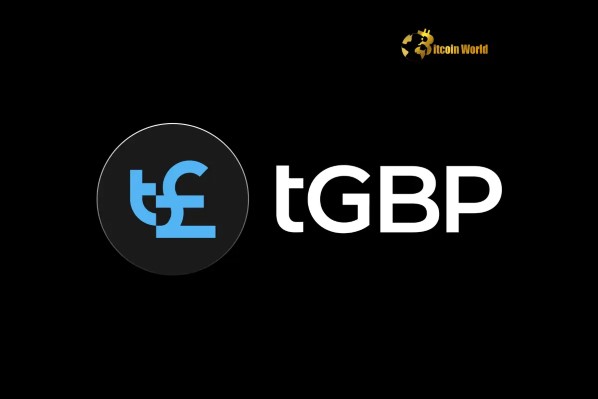BitcoinWorld

Ethereum Price: Unlocking the Massive $8K Potential Amidst Global Liquidity Shifts
The world of cryptocurrency is no stranger to bold predictions and unexpected endorsements. Recently, the digital asset community buzzed with excitement when Eric Trump, son of former U.S. President Donald Trump, acknowledged a post suggesting a truly audacious target for the Ethereum price. This wasn’t just any casual nod; it was an affirmation of a claim made by crypto entrepreneur Ted Pillows, who argued that Ethereum (ETH) is not only catching up with global liquidity but is also massively undervalued, potentially soaring past the $8,000 mark. But what exactly underpins such a powerful assertion, and what does it mean for the future of this leading blockchain?
What’s Driving the $8K Ethereum Price Prediction?
At the heart of Ted Pillows’ analysis, which caught Eric Trump’s attention, lies a concept crucial to understanding macroeconomic trends: M2 money supply. For those unfamiliar, M2 money supply is a broad measure of the amount of money in circulation, including cash, checking deposits, and easily convertible near money. Pillows’ core argument is that as the global M2 money supply grows, so too should the valuation of significant digital assets like Ethereum. He posits that based on this growth, the Ethereum price should already be trading well above $8,000.
This perspective hinges on the idea that cryptocurrencies, particularly decentralized ones like Ethereum, act as a hedge against inflation and a recipient of excess global liquidity. When central banks expand the money supply, traditional assets might inflate, but a fixed-supply or deflationary asset like Ethereum could theoretically absorb a significant portion of this liquidity, driving its value higher. Pillows suggests that the market hasn’t fully priced in this fundamental relationship, leaving ETH significantly undervalued.
- Global Liquidity Inflow: As more money enters the global financial system, a portion of it naturally seeks out new investment opportunities, including high-growth digital assets.
- Catch-Up Play: The argument implies that Ethereum is lagging behind the broader expansion of money supply and is due for a significant revaluation to align with these macroeconomic shifts.
- Inflation Hedge Narrative: In an environment of increasing inflation concerns, assets with perceived scarcity or deflationary mechanisms often gain traction as stores of value.
Is Ethereum Truly Undervalued? A Deeper Dive into the Ethereum Price
To assess the claim that Ethereum is undervalued, we must look beyond just macroeconomic indicators and examine its intrinsic value and ecosystem growth. Ethereum is not just a cryptocurrency; it’s a foundational blockchain platform that powers a vast and rapidly expanding ecosystem of decentralized applications (dApps), decentralized finance (DeFi), non-fungible tokens (NFTs), and more. Its utility is immense, serving as the backbone for countless innovations in the Web3 space.
Key factors contributing to Ethereum’s potential valuation include:
- Network Effects: Ethereum boasts the largest and most active developer community in the blockchain space. This network effect creates a powerful moat, attracting more projects, users, and capital.
- DeFi Dominance: A significant portion of the decentralized finance (DeFi) sector operates on Ethereum. Billions of dollars are locked in smart contracts, enabling lending, borrowing, trading, and more without intermediaries.
- NFT Leadership: The vast majority of high-value NFTs have been minted and traded on the Ethereum blockchain, establishing it as the premier platform for digital collectibles and art.
- Transition to Proof-of-Stake (The Merge): The successful transition to Proof-of-Stake (PoS) significantly reduced Ethereum’s energy consumption and introduced a deflationary mechanism through EIP-1559, which burns a portion of transaction fees. This makes ETH a yield-bearing asset for stakers and potentially reduces its circulating supply over time, positively impacting the Ethereum price.
Let’s consider some key metrics that illustrate Ethereum’s robust fundamentals:
| Metric | Description | Impact on Value |
|---|---|---|
| Total Value Locked (TVL) in DeFi | The aggregate value of assets deposited in DeFi protocols on Ethereum. | Indicates utility and trust in the network’s financial infrastructure. Higher TVL often correlates with a stronger network and potential for higher Ethereum price. |
| Active Addresses | The number of unique addresses involved in transactions on the network. | Reflects user adoption and network activity. A growing number suggests increasing utility and demand. |
| Transaction Fees Burned (EIP-1559) | A portion of transaction fees on Ethereum are permanently removed from circulation. | Contributes to ETH’s deflationary supply mechanism, potentially increasing scarcity and value over time. |
| Staked ETH | The amount of ETH locked up to secure the PoS network and earn rewards. | Reduces circulating supply, demonstrates long-term holder conviction, and strengthens network security. |
| Developer Activity | The number of developers actively contributing to the Ethereum ecosystem. | A vibrant developer community ensures continuous innovation, upgrades, and growth of dApps. |
Navigating the Potential and Pitfalls of Ethereum’s Journey
While the $8,000 Ethereum price target sounds exciting, it’s crucial to approach such predictions with a balanced perspective. The cryptocurrency market is known for its extreme volatility, and even the most robust assets face significant challenges.
Benefits of Ethereum’s Continued Growth:
- Technological Innovation: Ethereum continues to evolve with ongoing upgrades (like scalability solutions via sharding and rollups) that promise faster, cheaper transactions.
- Institutional Adoption: Growing interest from traditional financial institutions, with products like Ethereum ETFs, could inject significant capital and legitimacy.
- Global Standard for Web3: Its established position makes it a likely candidate to remain a foundational layer for the next generation of the internet.
Challenges on the Path to a Higher Ethereum Price:
- Regulatory Uncertainty: Governments worldwide are still developing frameworks for cryptocurrencies, and adverse regulations could impact market sentiment and adoption.
- Competition: While Ethereum is dominant, rival Layer 1 blockchains (e.g., Solana, Avalanche, Polkadot) are constantly innovating and attracting developers and users.
- Scalability Concerns: Although significant progress has been made, high transaction fees (gas fees) during peak network congestion remain a challenge for mass adoption, though Layer 2 solutions are mitigating this.
- Macroeconomic Headwinds: Broader economic downturns, interest rate hikes, or global crises can significantly impact investor appetite for risk assets like crypto.
Understanding these dynamics is vital. While the potential for the Ethereum price to reach new heights is certainly there, investors should always conduct their own thorough research and consider their risk tolerance.
What Does This Mean for the Average Investor and the Ethereum Price?
When prominent figures like Eric Trump acknowledge bold predictions, it often sparks curiosity and renewed interest. For the average investor, this type of news can serve as a catalyst for deeper investigation into Ethereum’s fundamentals and market dynamics. Ted Pillows’ assertion that ETH is one of the “best trading opportunities in the market” highlights the perceived discrepancy between its current valuation and its true potential based on macroeconomic factors.
However, it’s important to differentiate between a short-term trading opportunity and a long-term investment. While a significant price surge might present lucrative trading possibilities, the underlying strength of Ethereum as a technology and its continuous development make it a compelling long-term hold for many. Investors might consider:
- Dollar-Cost Averaging (DCA): A strategy of investing a fixed amount of money at regular intervals, regardless of the asset’s price, to reduce the impact of volatility.
- Diversification: Not putting all your eggs in one basket. While Ethereum is strong, a diversified crypto portfolio can mitigate risks.
- Staying Informed: Continuously monitoring market news, technological developments, and regulatory changes affecting the Ethereum price.
Ultimately, the acknowledgment from Eric Trump and the analysis from Ted Pillows serve as a powerful reminder of the speculative yet fundamentally driven nature of the crypto market. The idea that Ethereum is catching up with global liquidity and is undervalued is a narrative that resonates with many who believe in the long-term transformative power of decentralized technologies.
The conversation around the Ethereum price reaching $8,000, spurred by a high-profile nod and backed by macroeconomic analysis, underscores the immense potential many see in this leading cryptocurrency. While such targets are ambitious and subject to market volatility, the underlying arguments about global liquidity, M2 money supply, and Ethereum’s robust ecosystem provide a compelling case for its future growth. As the crypto market matures and integrates further into the global financial landscape, Ethereum’s role as a foundational layer for innovation continues to strengthen, making it a critical asset to watch. Whether it reaches $8,000 or beyond, its journey remains one of the most exciting narratives in the digital asset space.
Frequently Asked Questions (FAQs)
What is M2 money supply and how does it affect cryptocurrency prices?
M2 money supply is a broad measure of the total amount of money in circulation within an economy, including cash, checking deposits, savings deposits, and money market mutual funds. When the M2 money supply grows significantly, it can lead to inflation as there’s more money chasing the same amount of goods and services. For cryptocurrencies like Ethereum, some analysts argue that this excess liquidity can flow into digital assets, especially those with perceived scarcity or deflationary mechanisms, driving their prices higher as investors seek alternative stores of value or high-growth opportunities.
Is Ethereum truly undervalued based on current market conditions?
The assessment of whether Ethereum is truly undervalued depends on the metrics used. Proponents like Ted Pillows argue it is, based on its relation to global M2 money supply growth and its foundational role in the Web3 ecosystem. Factors like its vast developer community, dominance in DeFi and NFTs, and its deflationary mechanism (EIP-1559) also suggest strong intrinsic value. However, market valuation is complex, influenced by speculation, regulatory news, and broader economic sentiment, so ‘undervalued’ is often a subjective assessment.
What are the main risks associated with investing in Ethereum (ETH)?
Investing in Ethereum carries several risks, common to most cryptocurrencies. These include high price volatility, regulatory uncertainty (governments are still defining crypto laws), competition from other blockchain platforms, potential for network congestion leading to high transaction fees, and general macroeconomic headwinds that can impact risk assets. While Ethereum has strong fundamentals, its price can still be subject to significant fluctuations.
How accurate are price predictions like $8,000 for the Ethereum price?
Cryptocurrency price predictions, especially ambitious ones like $8,000 for Ethereum, are speculative and should be viewed with caution. They are often based on specific models (like M2 money supply correlation) or fundamental analysis, but the crypto market is highly unpredictable. While they can highlight potential, they are not guarantees. Investors should always conduct their own research and consider multiple perspectives rather than relying solely on single predictions.
What is Ethereum’s role in the broader cryptocurrency ecosystem?
Ethereum plays a pivotal role as the leading smart contract platform, serving as the foundation for the majority of decentralized applications (dApps), decentralized finance (DeFi) protocols, and non-fungible tokens (NFTs). It enables developers to build and deploy applications without central intermediaries, fostering innovation across various sectors. Its robust ecosystem, large developer community, and continuous technological advancements position it as a critical infrastructure layer for the evolving Web3 internet.
If you found this article insightful and want to share the exciting potential of the Ethereum price with your network, please consider sharing it on your social media platforms! Your support helps us bring more valuable insights to the crypto community.
To learn more about the latest crypto market trends, explore our article on key developments shaping Ethereum price action.
This post Ethereum Price: Unlocking the Massive $8K Potential Amidst Global Liquidity Shifts first appeared on BitcoinWorld and is written by Editorial Team





